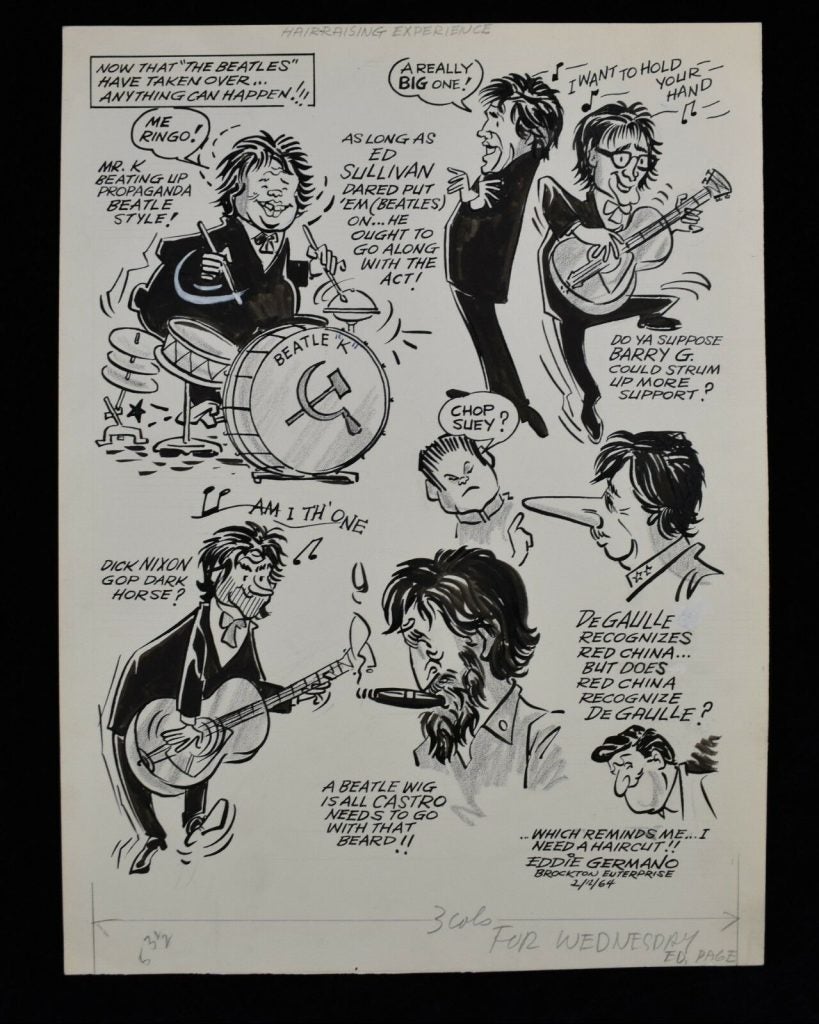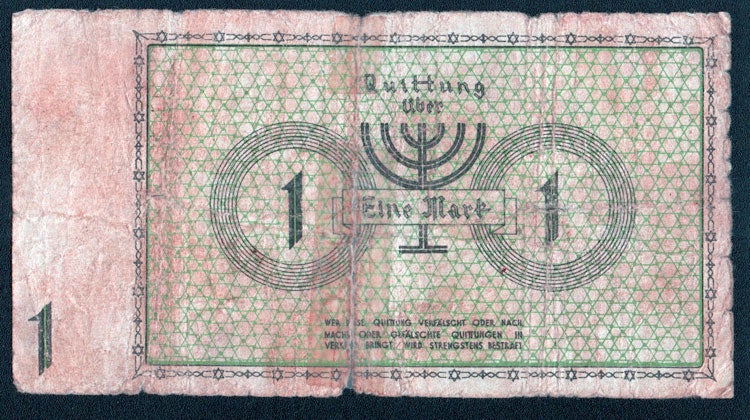
“A Little Sad Music Before Passing the Hat” (September, 1939; est.)
by Carey Orr (1980-1967)
12 x 15 in., ink on board
Coppola Collection
When the war officially broke out in Europe during September 1939, President Roosevelt wanted to provide assistance to the British. However, US law, and the prevailing isolationism that existed in the US after WWI and the still-present effects of the Great Depression, hindered any aid effort.
The Johnson Act of 1934 prohibited the extension of credit to countries that had not repaid US loans made to them during World War I, including Great Britain. The Neutrality Act of 1939 (March, following the German invasion of Czechoslovakia) allowed belligerents to purchase war materiel from the United States, but only on a “cash and carry” basis.
Internationalists, including the President, claimed that providing aid was a pro-active move that could prevent US participation in the war. Isolationists, including the military leadership, opposed diverting military supplies to the UK. Their position was that Britain would surrender following the collapse of France, and thus American supplies sent to the British would fall into German hands. US national security would be better served, so the argument went, by reserving military supplies for the defense of the Western Hemisphere.
In November 1939, FDR persuaded Congress to repeal the arms embargo provisions of the neutrality law so that arms could be sold to France and Britain.
This debate was still raging when Japanese aircraft attacked Pearl Harbor on December 7, 1941.
Military aid was not the only subject of the internal debate. Like most other countries, the United States did not welcome Jewish refugees from Europe. In 1939, 83% of Americans were opposed to the admission of refugees. In the midst of the Great Depression, many feared the burden that immigrants could place on the nation’s economy; refugees, who in most cases were prevented from bringing any money or assets with them, were an even greater cause for concern. As early as 1930, President Hoover reinterpreted immigration legislation barring those “likely to become a public charge” to include even those immigrants who were capable of working, reasoning that high unemployment would make it impossible for immigrants to find jobs.
Feelings of fear, mistrust, and even hatred of those who were different also shaped the public conversation around immigration. Fears of communist infiltrators and Nazi spies were rampant, as was anti-semitism. Leaders such as Father Charles Coughlin, known as “the radio priest,” was the first to offer Catholic religious services over the radio and reached millions of people with each broadcast. See the previous coverage of Father Coughlin, here (from June 13, 1939).
This cartoon by Orr is pretty clear: a negative reaction to an accusation of European propaganda about the war as a way to solicit US aid. The cartoon only has the year on it, but there is evidence of public reports (and debates) about “the open secret that the countries facing off in the new war were employing propaganda to help their causes.” George Gallop, in a summary article, declared, “Propaganda has grown to be one of the most powerful weapons of modern warfare,” reporting from a poll from September 13-18, 1939.
Lydia Saad has a nice overview of this topic in her February 2, 2018 article from The Gallup Vault.
Gallup Vault: Propaganda and Fake News in 1939
by Lydia Saad
In September 1939, about two weeks after the start of World War II, Americans expressed considerable skepticism about news reports coming in from Europe. Two-thirds said they had no confidence in the news from Germany, and 30% said they had no confidence in the news from England and France.
Most other Americans said they had “some confidence” in each side’s reports. This left only 8% feeling completely confident about the news from England and France and just 1% completely confident about the news from Germany.
First Casualty of War … the Truth?
Americans’ doubts about the credibility of European news may have partly reflected the open secret that the countries facing off in the new war were employing propaganda to help their causes. This awareness is evident in George Gallup’s introduction to his 1939 article on the poll, saying, “Propaganda has grown to be one of the most powerful weapons of modern warfare — useful both in demoralizing enemy forces and in influencing the opinion of neutrals. How aware is the American public that propaganda is being used in the present war, and how effective has that propaganda been so far?”
The article also addressed one blatant act of propaganda, or what today might be called fake news, involving the sinking of the SS Athenia — a British passenger ship — at the start of the war. As Gallup explained it, “The British have blamed the Athenia disaster on a torpedo from a U-boat. The German press, on the other hand, denied the torpedoing and even suggested that the passenger liner was sunk by the British in order to arouse anti-German sentiment.”
After the war, it was revealed that a German submarine commander had, indeed, ordered the Athenia to be torpedoed, mistaking it for a warship. How effective was Germany’s false claim that England had ordered the Athenia’s sinking as a ruse to draw America into the war? It’s not clear. Just 9% of Americans thought Germany wasn’t responsible, while 60% thought it was. However, another 31% were unsure — some of whom may have been influenced by Germany’s denials, while others were simply not aware of the matter.
Gallup’s World War II polling on propaganda didn’t distinguish between state-sponsored propaganda and propaganda spread through the press — perhaps because government influence over the press at the time, and the news media’s reliance on government reports, made it hard to separate the two.

















